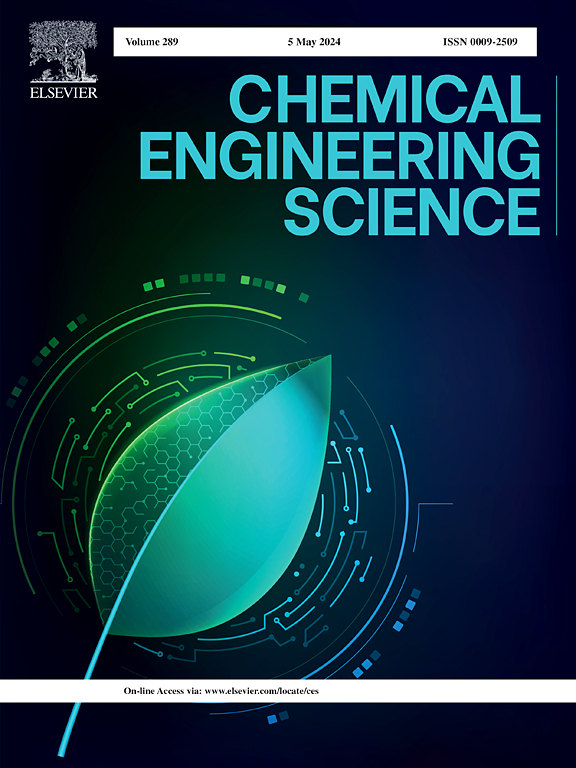Synergetic modulation of bifunctional Ni-loaded micro-mesoporous HZSM-5/MCM-41 for catalytic cracking of n-butane
IF 4.1
2区 工程技术
Q2 ENGINEERING, CHEMICAL
引用次数: 0
Abstract
Butane, mainly derived from catalytic cracking in petroleum processing, has a low chemical utilization. Catalytic cracking of butane can improve the efficiency of butane utilization by producing ethylene and propylene. Herein, the bifunctional Ni-loaded HZSM-5/MCM-41 catalysts, which had dehydrogenation-cracking synergism and micro-mesoporous structure, were synthesized by the alkaline treatment of HZSM-5 and incipient wetness impregnation method. The structural and chemical characteristics of the Ni-HZSM-5/MCM-41 were systematically investigated. The catalytic performance of n-butane cracking was evaluated. The synergistic modulation of acid property regulation, micro-mesoporous regulation, and the introduction of Ni enhanced the performance of n-butane cracking. Compared with pure HZSM-5, the Ni-HZSM-5/MCM-41 had appropriate surface acid strength and acidic site distribution. The micro-mesoporous composite structure enhanced the resistance to carbon accumulation, the activation and dehydrogenation performance of alkanes with low temperatures, and the selectivity of light olefins. A reaction pathway was put forward for the catalytic cracking of n-butane on Ni-HZSM-5/MCM-41.


双功能负载ni微介孔HZSM-5/MCM-41对正丁烷催化裂化的协同调节作用
丁烷主要来源于石油加工过程中的催化裂化,化工利用率较低。丁烷催化裂化生产乙烯和丙烯,可以提高丁烷的利用率。以HZSM-5为原料,采用碱处理和初湿浸渍法制备了具有脱氢-裂化协同作用和微介孔结构的双功能负载ni催化剂。系统地研究了Ni-HZSM-5/MCM-41合金的结构和化学特性。对正丁烷裂解的催化性能进行了评价。酸性调控、微介孔调控以及Ni的引入协同调控提高了正丁烷裂化性能。与纯HZSM-5相比,Ni-HZSM-5/MCM-41具有合适的表面酸强度和酸性位点分布。微介孔复合结构增强了其抗积碳能力,提高了烷烃的低温活化脱氢性能,提高了轻质烯烃的选择性。提出了Ni-HZSM-5/MCM-41催化丁烷裂解的反应途径。
本文章由计算机程序翻译,如有差异,请以英文原文为准。
求助全文
约1分钟内获得全文
求助全文
来源期刊

Chemical Engineering Science
工程技术-工程:化工
CiteScore
7.50
自引率
8.50%
发文量
1025
审稿时长
50 days
期刊介绍:
Chemical engineering enables the transformation of natural resources and energy into useful products for society. It draws on and applies natural sciences, mathematics and economics, and has developed fundamental engineering science that underpins the discipline.
Chemical Engineering Science (CES) has been publishing papers on the fundamentals of chemical engineering since 1951. CES is the platform where the most significant advances in the discipline have ever since been published. Chemical Engineering Science has accompanied and sustained chemical engineering through its development into the vibrant and broad scientific discipline it is today.
 求助内容:
求助内容: 应助结果提醒方式:
应助结果提醒方式:


